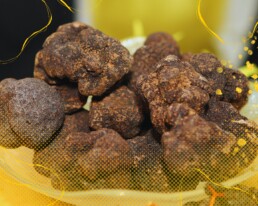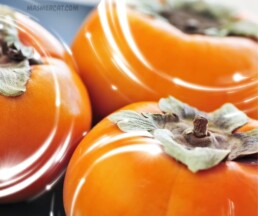Tree Bread (Jackfruit): The fruit that tastes like all fruits
As is customary, we'll talk about another fruit, this time an exotic one called Jackfruit (Yaca or Jaca), as we recently had the opportunity to try it in Mexico, where we witnessed its cutting and pulp extraction, which, by the way, is not easy at all. You need to keep some tips in mind if you don't want to end up with sticky hands and to know when it's ripe, otherwise, it will taste very acidic.
With a rough, green, and large appearance, the inside reveals the fibrous flesh surrounding the orange-colored arils when they are ready to eat. It has its own unique flavor but is somewhat reminiscent of papaya, mango, and pineapple, which is why some call it the "fruit-flavored fruit." Like most fruits, the riper it is, the sweeter it is, but the smell can be strong, even unpleasant for some sensitive noses. The fruit's ripeness can be recognized just by touching its skin; if it yields slightly, it is ready. It may also show brown tones on the skin, but the secret is not to let it pass that point, or the taste will no longer be optimal.
Its Origin
Jackfruit (Artocarpus heterophyllus) is a tropical fruit, native to South Asia and Southeast Asia; botanical and ethnobotanical evidence places it in the region between Southern India (Western Ghats) and Southeast Asia, where various varieties exist. It is currently found in several Latin American countries such as: Brazil, Venezuela, Ecuador, Peru, Colombia, Mexico, Guatemala, Nicaragua, and the Caribbean. Generally, it thrives in any Latin American country with a warm and humid tropical climate, from sea level up to about 1500 meters of altitude.
This fruit is known by various names such as jaca, nanca, langcá, panpén, or tree bread, among others.
How to Consume It and Care Tips for Peeling / Cutting (Practical Tips)
Regarding consumption: traditionally, in Asia, it is eaten both ripe (the sweet pulp) and green (cooked), and the seeds are also consumed, either boiled or roasted.
- For ripe Jackfruit: Eat the "arils" (the sweet segments) raw or in smoothies, ice creams, and desserts.
- For green (unripe) Jackfruit: It is used cooked in stews, stir-fries, curries, or as a meat substitute in tacos, burgers, or pulled-jackfruit.
- Seeds: They are boiled, roasted, or added to stews — they are edible and rich in starch.
- Trick for peeling without a mess: Smear the knife and your hands with neutral oil (this prevents the sticky sap from complicating the cutting). Cut the fruit lengthwise into quarters or halves, separate the rind, extract the woody core, and separate the arils by pulling away the fibrous tissue; remove the membrane surrounding the seeds. Use gloves if you prefer. These practical recommendations reduce stickiness and allow you to work safely. For more details, watch our video on our social media channels (RRSS).
Demand in Europe and Western markets has grown in recent years, driven by the plant-based trend and its use as a shredded meat substitute (a "pulled" texture). Market reports indicate sustained growth and increased presence in specialized supermarkets, vegan restaurants, and processed products.
Properties and Health Benefits
Jackfruit is nutritious: it provides carbohydrates, fiber, Vitamin C, potassium, and, notably, its protein content (2g) is high for a fruit. It also contains bioactive compounds (flavonoids, lignans) with antioxidant and anti-inflammatory potential. Studies reviewed in scientific literature list it as an interesting source of micronutrients and phytochemicals.
| Nutritional Component | Amount (per 100 g) | Key Contribution |
|---|---|---|
| Energy | 95 kcal | Medium caloric intake |
| Carbohydrates | 23 g | Main energy source |
| Sugars | 19 g | Responsible for its sweetness |
| Dietary Fiber | 1,5 - 2,5 g | Aids digestive health |
| Protein | 1,7 - 2,0 g | High for a fruit |
| Total Fats | 0,6 g | Very low fat content |
| Vitamin C | 10 - 14 mg | Potent antioxidant |
| Potassium (K) | 400 - 450 mg | Heart health and blood pressure |
| Magnesium (Mg) | 25 - 30 mg | muscle and bone function |
Global Production and Expansion
Today, jackfruit is widely cultivated in tropical and subtropical countries. India appears as the largest global producer, followed by Bangladesh, Thailand, and Indonesia; recent reports and agricultural authorities have highlighted India and Bangladesh as the main global suppliers. These are countries where it has been cultivated for centuries and where every part of the plant is widely utilized, from the termite-resistant wood of the tree to dyes for Buddhist monks' robes. Recent data show production concentrated in Asia (India, Bangladesh, Thailand, Indonesia, Sri Lanka). Parallel to this, the industry for processed products (canned goods, frozen pulp, vegetarian/vegan products) exporting to Europe and America has grown. Market analysts project moderate annual growth in the coming years due to the demand for plant-based alternatives.
Open Yourself to New Flavors
Die Jackfrucht ist eine vielseitige, schmackhafte Frucht mit bemerkenswerten Nährwertvorteilen. Wenn du sie noch nicht kennst, suche frische Jackfrucht auf ethnischen Märkten, in Dosenkonserven oder in veganen Produkten auf Jackfruit-Basis. Wage dich an neue Küchenexperimente – von Desserts mit reifer Frucht bis zu herzhaften Gerichten mit der grünen Pulpe. Sie ist nachhaltig, überraschend und für viele einfach köstlich.
Find out about our products here.
The Flat Peach and Flat Nectarine: Sweetness that Refreshes
During the hot summer months, few fruits are as refreshing and appetizing as the flat peach, also known as doughnut peach, paraguaya or its variant flat nectarine. This fruit, with its flattened shape and intensely sweet flavor, has won over taste buds around the world—especially in Spain, where its consumption grows year after year. But where does this peculiar fruit come from? What health benefits does it offer? And how should we consume it to make the most of its qualities?
Origin of the Flat Peach
The flat peach is a variety of peach (Prunus persica var. platycarpa), and its flat shape is the result of a natural mutation. Its origin dates back to China, where primitive versions were already being cultivated more than 2,000 years ago, as documented in ancient texts describing China’s long agricultural tradition. From there, it spread to Persia, the Mediterranean, and Europe, eventually reaching the Americas.
Its flattened form is believed to have arisen spontaneously as a mutation of the common peach tree, later selected for its intense flavor, thin skin, and juicy flesh
Different Names Around the World
This fruit is known by different names depending on the country or region:
Spain: paraguayo or platerina (the latter usually refers to the smooth-skinned variety, similar to a nectarine).
Latin America: durazno chato, durazno paraguayo, or melocotón plano.
English: doughnut peach, Saturn peach.
France: pêche plate.
Italy: pesca piatta or saturnina.
This variety has become popular in many countries for being sweeter and less acidic than traditional peaches, and for being easier to eat since the pit separates easily from the flesh.
Consumption in Spain and Worldwide
Spain is one of the leading producers and exporters of flat peaches in Europe, particularly in regions such as Murcia, Aragón, and Catalonia. The season runs from June to September, making it a star fruit of the summer. Spanish consumers value it for its sweetness, aroma, and pleasant texture.
Beyond Spain, the flat peach has also gained a presence, especially in gourmet markets and healthy eating circles. Countries such as the United States, Italy, and France have incorporated this fruit into their fresh produce markets as well as into products like juices, jams, and desserts.
Nutritional Properties
The flat peach is a highly nutritious fruit, low in calories and rich in water—making it ideal for hydration and weight-control diets. Below is an approximate nutritional breakdown per100 grams:
Nutrient | Approx. Amount |
Calories | 39 kcal |
Water | 87% |
Carbohydrates | 9.5 g |
Natural sugars |
|
Fiber | 1.5 g |
Protein | 0.9 g |
Fat | 0.3 g |
Vitamin C | 10 mg (17% VD) |
Vitamin A (beta-carotene) | 326 IU |
Potassium | 190 mg |
Magnesium | 9 mg |
Health Benefits
Eating flat peaches offers a range of benefits that go beyond their refreshing taste: they provide natural hydration, deliver antioxidants that help combat oxidative damage, supply fiber that supports healthy digestion, improve cardiovascular function thanks to their potassium content, and are also ideal for a healthy diet as they are low in calories.
What’s the Difference Between the Flat Peach and the Flat Nectarine?
The difference lies not in the species, but in the skin texture and subtle variations in taste and appearance.
Both belong to the same species (Prunus persica var. platycarpa ), a flat variety of peach.
Characteristic | Flat Peach | Flat Nectarine |
Skin | Velvety (with fuzz) | Smooth (no fuzz) |
Flavor | Sweet, juicy, aromatic | Sweet, firm, slightly crisper |
Appearance | Mixed, less uniform colors | Brighter, more uniform colors |
Origin | Flat peach variety | Flat, fuzz-free variety, similar to nectarine |
How to Enjoy it
The flat peach can be enjoyed in many ways: The traditional one is to eat the fruit well-washed and in season, or to add it to a good salad to bring a sweet touch. At breakfast or as a dessert, it pairs wonderfully with yogurt or curd. Another very healthy option is to grill it, which enhances its sweetness and makes it an ideal side dish.
Finally, you can make the most of its sweetness by blending it with plant-based milk or yogurt and ice, without added sugar, resulting in a refreshing, nutritious drink with balanced sugar content—perfect for beating the summer heat. And if you want even more nutrients, you can add seeds such as chia or flax. In smoothies, blended with plant-based milk or yogurt, ice, and no added sugar for a refreshing, nutrient-rich summer drink. For an extra nutritional boost, add seeds like chia or flax.
This summer, you can enjoy the refreshing taste of the flat peach a healthy, versatile, and delicious fruit that continues to earn its place in the Mediterranean diet and beyond.
So if you haven’t tried it yet, summer is the perfect time to savor this juicy, delightful gift of nature.
For more information, explore our products here.
Chicozapote: The Fruit of the Chewing Gum Tree
Once upon a time, somewhere in Mesoamerica and the central-southern region of the American continent, deep within the tropical rainforest—where fruit-bearing trees were treasures waiting to be discovered—stood out a tree and its remarkable fruit known as chicozapote. In this article, we’ll explore this unique fruit, its origin, key characteristics, health benefits, and its economic importance.
Fruit of a Sacred Tree
In pre-Hispanic times, various ancient cultures—most notably the Maya and Aztec civilizations—held this tree in high regard. From it, they extracted a milky sap that thickened into an elastic, gum-like substance.
This was the earliest form of chewing gum, highly valued not just for freshening breath or cleaning teeth, but also for its ceremonial use as a sacred offering. Over time, the tree itself came to be considered sacred.
But beyond its prized sap, the tree also bore a beloved fruit: chicozapote, known as sapodilla in the Canary Islands, and often referred to as níspero in the Dominican Republic, Colombia, and Panama.
What does "chicozapote" mean in Nahuatl?
“tzictli” (gum or resin) and “tzapotl” (a general term for soft, sweet fruits).
So, in Nahuatl, chicozapote means:
“Sapote of the gum” or “fruit of the gum tree.”
Nutritional Properties
Manilkara zapota is the scientific name of the chicozapote, a fruit with a rough texture, brown color, sweet and juicy pulp, and black seeds—known for its unique flavor. Among its main nutrients are natural fiber, vitamins A, C, and B complex. The primary minerals it contains include potassium, iron, and calcium, as well as antioxidants. This nutritional content makes the fruit a source of health; with its stream of nutrients, consuming it helps strengthen the body.
Main Health Benefits
Like most fruits and vegetables, chicozapote is best enjoyed as part of a balanced and varied diet.
When consumed regularly, it can provide a range of health benefits:
- Improves digestion, thanks to its high fiber content
- Strengthens bones and teeth, due to calcium and phosphorus
- Regulates blood pressure, with its natural potassium
- Boosts the immune system, thanks to its vitamin C
- Provides natural energy, perfect for athletes or anyone needing a healthy lift
Recent studies have also explored its antimicrobial and anti-inflammatory properties, reinforcing its role as a natural superfruit.
Tips to Eat It at the Perfect Time
Chicozapote is typically harvested before it's fully ripe to ensure freshness during transport and display—whether in local markets, supermarkets, or grocery stores.
This makes it essential to know when it's at its optimal ripeness for consumption.
An important aspect to consider is that it should feel soft to the touch, similar to an avocado. If it’s too hard, it still needs time to ripen; if it’s too soft or has sunken spots, it may be overripe. Another point to keep in mind is the color of the skin, which becomes more dull and earthy when ripe. Sometimes, it may show small rough patches without affecting the inside.
It should be easy to peel with a knife or by hand, and it should have a pleasant smell. If it doesn’t have any scent, it’s likely still unripe. Finally, if you bought it while still unripe, let it ripen at room temperature for 3 to 5 days, just as you would with a mango or a banana.
A Fruit That Deserves a Place at Your Table
In a world longing for authenticity, chicozapote is a perfect example of how ancestral wisdom and modern living can coexist. Rich, nutritious, and steeped in history, this fruit reminds us that nature has so much to offer—if we know where to look.
So next time you see it at a market or in a traditional recipe, don’t hesitate: chicozapote is wellness in its sweetest form.
→ Learn more about our products with just one click.
Truffle: Sophistication in Your Kitchen
This past winter, we had the wonderful opportunity to experience life in the Aragonese countryside. Alongside seasoned farmers, we witnessed the fascinating process of truffle harvesting. It was a day full of adventure—through ravines, dirt roads, herds of livestock, snow, and of course, breathtaking views of the mountains straddling the border between the Valencian Community and Aragon. A memory that inspired us to write and share this article with you.
Guided by our bold and knowledgeable friends, we stepped into a world entirely new to us, eager to see how these elusive fungi would reveal themselves. But none of it would have been possible without the star of the day—our truffle-hunting companion with a keen and well-trained nose.
Her name was Luna, a clever little dog who reigned supreme when it came to sniffing out delicious truffles. She surprised us several times with her skill. That said, once she realized the hunt was over, she cheekily tried to convince us there were more truffles, just to earn another reward. Luckily, her owner knew her tricks, and we wrapped up the search.
That day we found several truffles—one the size of a fist! It was exciting to watch Luna point with her paw to the exact spot, where we then carefully dug beneath a tree known to be a common host for truffles. With patience and determination, we uncovered the precious delicacy hiding underground.
To learn more, and guided by experts, we dove into the mysterious world of subterranean fungi, where the truffle shines like no other. Known as the black diamond of the kitchen, this exquisite delicacy has captivated palates for centuries and remains a symbol of sophistication and flavor in haute cuisine. But where does it come from? What makes it so special? And how can you add it to your diet? We’ll tell you everything.
How Did Truffles Make It to Our Tables?
Truffles have a history that spans thousands of years. In Ancient Greece and Rome, they were already prized for their flavor and supposed aphrodisiac qualities. Philosophers like Theophrastus and Pliny the Elder wrote about them, fascinated by their mysterious underground growth and intoxicating aroma.
However, it was in medieval and Renaissance Europe that truffles gained prestige among the nobility. France, Italy, and Spain became key players in truffle cultivation and remain global leaders in production and export to this day.
Leading Producers Around the World
Europe is, without a doubt, the birthplace of truffles. The top-producing countries include:
- France: Especially in regions like Périgord and Provence, known for cultivating the prized Tuber melanosporum, or black winter truffle.
- Italy: Home to the renowned Tuber magnatum, or white truffle from Alba in Piedmont—considered the most aromatic and valuable in the world.
- Spain: Aragon, Soria, and Catalonia are key areas for black truffle production, with remarkable growth in recent years.
Globally, countries like Australia, Chile, and the United States have begun developing truffle plantations, although they still trail behind the prestige of European producers.
Nutrients and Health Benefits
Though truffles are consumed in small amounts, their nutritional profile is noteworthy. Key components include:
- Proteins: Containing essential amino acids
- Fiber: Aids digestion and supports gut health
- Minerals: A good source of iron, magnesium, calcium, and phosphorus
- Natural antioxidants: Help fight cellular aging
- Low in calories and fat: Ideal for balanced diets
Some studies even suggest that their volatile compounds may offer antimicrobial and anti-inflammatory effects.
How to Enjoy It: Flavor in Every Slice
Truffles aren’t cooked like regular mushrooms. Their aroma intensifies with heat but is highly sensitive to overcooking. The key is to shave them thinly over hot dishes, allowing the warmth to release their fragrance without damaging their flavor.
Some popular ways to enjoy truffles:
- Over fresh pasta, with butter and parmesan
- In scrambled or fried eggs for a gourmet touch
- In risottos or creamy soups
- As a topping on carpaccios or meat dishes
- In infused oils to add flavor to toast, cheeses, or salads
Have You Tried It Yet?
Black truffle season runs from November to March. If you haven’t yet made it part of your menu, don’t hesitate to experience this flavor that enhances and transforms any dish into a true sensory experience.
We’re excited to bring you the best from the earth. That’s why we invite you to discover and enjoy truffles in your favorite recipes.
Want to learn more about truffles or other exquisite products? We’re here to help! Just ask—we’d love to assist you. Your next culinary inspiration might be closer than you think.
Discover our products with just one click.
Mamey: El Fruto Tropical que Debes Probar
As we have done with our previous articles on fruits, this one is dedicated to a lesser-known, exotic fruit. We hope this article sparks your interest and encourages you to try it.
Mamey (Pouteria sapota), also known as Zapote, is a tropical fruit of great historical, cultural, and economic significance in Mesoamerica and the Caribbean. With its unmistakable flavor and creamy texture, this exotic fruit has captivated those seeking a natural and nutritious delicacy.
Origin and History
Archaeological evidence suggests that mamey has been part of indigenous diets for over 2,000 years. It was highly valued not only for its sweet taste and high energy content but also for its medicinal properties. Pre-Hispanic codices and colonial chronicles reference this fruit as a key element in Mesoamerican trade.
With the arrival of Spanish colonizers, mamey spread to other tropical regions of the Americas, including Mexico, Cuba, the Dominican Republic, and parts of South America. Today, it is a popular fruit in various countries and is primarily cultivated in warm, humid climates.
The leading producers of mamey include Mexico, Cuba, the Dominican Republic, Costa Rica, and several Caribbean and South American countries, where tropical climates support optimal growth.
What Are Its Health Benefits?
Mamey is not only delicious but also packed with essential nutrients that offer numerous health benefits. Some of its key components include:
Rich in Vitamins A, C, and E, supports eye health, strengthens the immune system, and protects the skin against aging. Rich in Vitamins A, C, and E, supports eye health, strengthens the immune system, and protects the skin against aging.
Loaded with Natural Antioxidants– The presence of carotenoids and polyphenols makes it an excellent ally against free radicals, reducing the risk of chronic diseases.
Contains Healthy Fatty Acids , these natural oils benefit cardiovascular health and help keep the skin hydrated.
Su contenido en carotenoides y polifenoles lo convierte en un excelente aliado para combatir los radicales libres y reducir el riesgo de enfermedades crónicas. Además de ácidos grasos saludables, contenidos en su pulpa, estos aceites naturales benefician el sistema cardiovascular y mantienen la piel hidratada.
How to Identify a Good Mamey Fruit
Mamey is a medium to large-sized fruit with a thick, rough brown skin that protects its vibrant orange or reddish pulp. The flesh has a creamy, smooth texture, similar to that of an avocado, and its sweet flavor carries hints of almond and vanilla, making it highly prized in culinary applications. At its center lies a large, dark seed, often used in traditional remedies and mamey oil production.
Mamey Consumption in Europe
In recent years, mamey has gained popularity in Europe due to the growing demand for exotic and healthy foods. Although its distribution remains limited compared to other tropical fruits, it can be found in specialty markets and Latin American food stores. Countries like Spain and France have shown increasing interest, particularly within Latin American immigrant communities and gourmet cuisine, where it is used in desserts and beverages.
Mamey in the Industry
One of the standout byproducts of mamey is its seed oil, widely used in hair and skincare treatments. This oil is known for:
- Preventing hair loss
- Acting as a natural conditioner
- Controlling frizz
- Strengthening eyelashes and nails
- Providing heat protection for hair styling tools
For skincare, mamey oil serves as a natural emollient with moisturizing, antioxidant, and anti-inflammatory properties, making it ideal for skin protection and regeneration.
Additionally, it has therapeutic and medicinal uses, such as:
- Treating various scalp and skin conditions
- Relieving insect bites and irritations
- Moisturizing chapped lips
- Enhancing relaxation through massages
Culinary Uses of Mamey
Mamey is a versatile fruit that can be enjoyed in multiple ways. It is often eaten fresh by simply cutting it in half and scooping out the flesh with a spoon. It is also a key ingredient in smoothies, ice creams, desserts, jams, and even savory sauces. Its natural sweetness makes it a great alternative to refined sugars in various recipes.
Our top recommendation is a mamey smoothie with skim or plant-based milk—no added sweeteners needed, as the fruit is naturally sweet.
To fully enjoy its flavor and benefits, it is best to select mameys at their peak ripeness when their skin slightly yields to pressure and emits a sweet aroma.
Dare to try mamey and find out why it is considered a tropical treasure full of flavor and nutrition! Get to know our products, just with a click.
Divine Fire Fruit: The Persimmon
A very familiar name in our shopping basket during the autumn-winter season, also called Sharoni (Triumph), Persimon, Kaki, or Palo Santo.
We’ve decided to dedicate this space to delve a little into its history and how it has earned a special place in consumers’ preferences.
Where Did It Originate?
Divine Fire Fruit: The PersimLike several fruits we’ve discussed in our blog, its origin lies in Asia—specifically China and Japan. Its scientific name is "Diospyros kaki", which means "fruit of the divine fire." In Japan, it is associated with longevity and good fortune, and in many cultures, it symbolizes perseverance and inner strength.
Beyond its symbolism, it is a fruit with rich traditions, sweetness, and numerous health benefits.
In Spain, it was introduced in the 18th century and was warmly received, eventually earning a strong foothold in the fields of Spanish farmers. This is particularly true in the Ribera Alta region of the Valencian Community, where it has flourished with great success and is now the second-largest persimmon-producing region in the world. This effort resulted in the creation of the "Kaki Ribera del Xúquer" Designation of Origin, which we will discuss in greater detail in this article.
Today, Spain, along with Italy, are the largest producers in the European region.
A Unique Flavor?
This is a topic of much discussion among consumers, as persimmons can sometimes be slightly bitter in certain varieties. This characteristic is due to tannins, which give the fruit its astringent taste, leading to classifications as astringent or non-astringent varieties.
Some astringent varieties include: Rojo Brillante, Eureka, Hachiya, and Koushu-Hyakume, which must be eaten when very ripe to avoid astringency. At this stage, the fruit’s texture becomes so soft that it can even be eaten with a spoon. In the case of the Rojo Brillante variety, once the astringency is removed, it is known as Persimon, a protected brand name. After post-harvest treatment, it retains its firmness and develops a sweeter taste.
Non-astringent varieties include: Jiro, Sharon, Honan Red, and Fuyu, which naturally mature until the fruit becomes softer and sweeter.
However, the fruit's soft flesh posed a challenge for commercialization, leading to the search for alternative ripening techniques to produce a sweet yet firm-textured fruit.
With the support of the Valencia Agricultural Research Center and based on the Rojo Brillante variety, a fruit oxidation process was developed, resulting in the Kaki Ribera del Xúquer Designation of Origin mentioned earlier. This product is characterized by firm consistency, an intense orange skin and flesh, a good size, and a sweet flavor.
This innovation has been a great success, enabling easier handling and access to international markets, significantly expanding over the last twenty years.
What Are Its Health Benefits?
The persimmon harvest season in Spain runs from October to January, coinciding with colder weather and the onset of colds and flu. Maintaining a strong immune system is crucial during this time. Nature provides us with many fruits to strengthen our immune systems, from delicious citrus fruits to flavorful berries like persimmons, which offer numerous nutrients.
It contains:
- Antioxidants– Fight free radicals, thereby boosting the immune system.
- Calcium– Strengthens bones.
- Potassium– Improves heart health, blood pressure, and arteries.
- Vitamin A - Enhances eye health.
- Vitamin C - Improves iron absorption and skin appearance.
- Flavonoids - Beta-carotenes that boost the immune system.
- Fiber – Improves digestion and regulates intestinal transit, as soluble fiber retains water and reduces cholesterol levels.
These nutrients make persimmons an excellent addition to your diet, especially during the autumn and winter seasons when they are at their peak. We encourage you to maintain a balanced and healthy diet along with regular exercise. We encourage you to maintain a balanced and healthy diet, as well as a regular exercise routine.
We invite you to explore our products.
Blood Orange, citrus charm of Mediterranean cuisine
In lands of citrus tradition, amidst the peak season of Sanguinelli oranges, we have a clear mission: to conquer palates with its delicate flavor and myriad health benefits.
Originating from Southern Italy and with variations arising from natural mutations in Valencian lands, this orange variety is not only cherished by connoisseurs but has also become an essential ingredient in Mediterranean cuisine.
A Colorful Variety
The Sanguinelli orange, also known as “Blood Orange” and “Tarocco” in Italy, was introduced to the Valencian community in the late 19th century in Ribera Alta, where the “Washington Navel” was the predominant variety. Cultivated in optimal climatic conditions, this citrus stands out with a more acidic taste, smaller size than average, intense orange-colored peel, tender flesh with few seeds, revealing hues ranging from a faint red to a deep crimson. This color phenomenon is a result of cold nights in the Mediterranean winter, combined with sunny days, as well as anthocyanins, natural antioxidants that take us beyond traditional sweetness to savor a touch of acidity.
Behind its captivating appearance, the Sanguinelli orange harbors an abundance of health-beneficial nutrients. Rich in vitamin C, this citrus fruit strengthens the immune system and promotes cardiovascular health.
Additionally, its antioxidant content helps combat premature aging and protect against chronic diseases. Akin to traditional varieties in health properties.
The Sanguinelli orange also contains phytonutrients that may help reduce inflammation and improve skin health. Its low-calorie content makes it a healthy option for those seeking to maintain a balanced and delicious diet.

A Joyful Touch in Gastronomy
In Mediterranean cuisine, the blood orange stands out as an outstanding ingredient that adds a cheerful touch to culinary preparations. Its bold and slightly acidic flavor adds depth to fresh salads, meat and fish dressings, and tempting desserts. From jams to sorbets, the versatility of the blood orange unfolds in every corner of Mediterranean gastronomy.
Try the bold combination of Sanguinelli orange with olives, red onions, basil, and mozzarella cheese to create a refreshing salad that captures the essence of the Mediterranean. Or be captivated by its sweetness in desserts like cakes and jellies, where its crimson hue creates a visually stunning presentation.
As the Sanguinelli orange harvest season progresses, immerse yourself in the versatility of this citrus jewel and discover a world of culinary possibilities. Whether you enjoy it alone, in juices, or as part of elaborate Mediterranean recipes, the blood orange provides that gastronomic Mediterranean accent, ensuring that prepared dishes do not go unnoticed, highlighting vibrant freshness and healthy splendor. Delight your senses with the Sanguinelli orange and make every bite an unforgettable experience!
Autor: Selene.
Tangerines vs. Clementines: Differences, Origins, and Benefits
A little orange treasure that has illuminated our days and nourished our bodies throughout history. On this journey through the delicious world of tangerines, we will explore their origins, unravel the mystery behind their relationship with clementines and highlight the properties and benefits that make this fruit a true gift from nature.
A journey through time: The story of the tangerine
The tangerine, belonging to the citrus family, has its roots in Southeast Asia. It is believed to have been first cultivated in China thousands of years ago and, over time, has become one of the most prized fruits in the world. Its name derives from the bright color of the clothing of ancient Chinese officials, known as “mandarin”.
The expansion of the Silk Road played a crucial role in the spread of the tengerine throughout Asia, Europe and finally America. Today, it is grown in diverse regions, from the sunny fields of California to the lush orchards of Spain.
Tangerines vs. Clementines: What is the difference?
Tangerines and clementines are often mentioned interchangeably, but are they really the same thing? The answer is yes and no. Both belong to the group of citrus fruits, but clementines are a specific variety of tangerines. The distinction may be subtle, but citrus connoisseurs may notice differences in flavor and size. Clementines tend to be smaller, sweeter, and easier to peel than mandarins in general.

Varieties of Tangerines and Clementines
As mentioned above, clementine is a variety of tangerine, but its popularity and distinctive characteristics deserve a specific mention. It is known for its sweet flavor, easy peeling, and smaller size. Some of the best known varieties are:
Clemenules: This clementine variety deserves special recognition. Originally from Spain, Clemenules are famous for being juicy, easy to peel and with a perfect balance between sweet and sour. Its harvest season in winter makes it a perfect delight to brighten the coldest days.
Fine Clementine: This clementine is another gem that stands out for its sweetness and softness. The skin is thin and easy to remove, revealing juicy segments full of flavor.
Nules Clementine: Originally from Spain, this variety is similar to Clemenules in terms of flavor and ease of peeling. Its presence in the markets is mainly concentrated during the winter season.
Other varieties of tangerines: In addition to clementines, there are a variety of tangerines, each with its own distinctive characteristics. Some of the best known include:
Satsuma Tangerine: Native to Japan, the Satsuma tangerine is easily recognizable by its loose skin and sweet, juicy flavor.
Dancy Tangerine: With its deep red color and sweet and sour flavor, Dancy is a tangerine that is enjoyed during the winter season.
Murcott Tangerine: Conocida por su piel delgada y su sabor distintivo, la mandarina Murcott es popular en climas cálidos y se cosecha principalmente en primavera.
The world of mandarins and clementines is diverse and delicious. Each variety has its unique charm, but Clemenules stands out as a gem among clementines, offering a culinary experience worth savoring. Let’s enjoy the variety and exquisiteness of these wonderful citrus fruits!
The properties that make the tangerine shine
Behind its bright orange skin and juicy flavor, the tangerine harbors a wealth of beneficial health properties. Here are some reasons why this little fruit deserves a prominent place in your diet:
Vitamin C: Tangerine is a powerhouse of vitamin C, a key antioxidant that strengthens the immune system and promotes skin health.
Fiber: Rich in fiber, tangerine helps maintain a healthy digestive system and may contribute to weight loss by providing a feeling of satiety.
Antioxidant:The antioxidants present in tangerine help fight free radical damage, protecting our cells and promoting overall health.
Hydration: With a high water content, tangerine is a great option for staying hydrated, especially in hot weather.

Benefits of regular consumption of tangerines
Incorporating tangerines into your diet can offer a number of long-term health benefits. Some of these include:
Cardiovascular health: Tangerine can help reduce cholesterol levels and improve heart health.
Control of blood pressure: Nutrients like potassium in tangerines can help maintain healthy blood pressure levels.
Weightloss: ts fiber and low calorie content make tangerines an ideal snack for those looking to lose weight.
Eye health: The presence of vitamin A in tangerines is beneficial for vision and eye health in general.
These citrus fruits are not only delicious fruits, but also an invaluable source of essential nutrients. From its humble beginnings in China to its global status as a healthy snack, it has left a lasting mark on food history. The next time you enjoy this little orange wonder, remember that you are savoring not only its exquisite flavor, but also centuries of history and health concentrated in each juicy segment. Enjoy the tangerines!
Autor: Selene.








